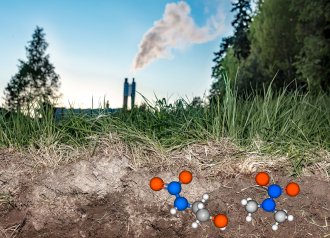
Carbon capture and storage
Within carbon capture and storage (CCS), NIVA has expertise related to the capture process and risk assessment of nearby drinking water sources. We also have experts working on the carbon storage that occurs naturally via the earth's carbon cycle.
Through the Paris Agreement, Norway and the EU have committed to drastically reduce our CO2 emissions. Carbon capture and storage technology plays a crucial role in achieving these goals. This technology works by capturing CO2 from large emission sources, such as the flue gas from a cement factory, and then storing it deep in geological formations over a long period of time. This helps to 'remove' CO2 from the carbon cycle, preventing it from reaching the atmosphere, where it would have acted as a greenhouse gas.
At NIVA, we contribute to the risk assessment of new CO2 capture plants. The focus is on carcinogenic and potentially carcinogenic substances that can be formed as a by-product of the process. These can end up in our open drinking water sources where there are recommended safety limit values. Through modelling, we can predict future levels of nitrosamines and nitramines in water reservoirs.
We also have experience with traditional environmental monitoring for CO2 capture plants. Our experts are working to generate new knowledge about what happens to nitramines in nature.
Get in touch if you want to know more about what we can contribute within carbon capture and storage and risk assessment of nearby drinking water sources.
Natural carbon capture and storage
There are also natural carbon capture and storage processes taking place in ecosystems across the globe, from forests to oceans. Blue forests, which include eelgrass meadows and kelp forests, are examples of such natural carbon storage areas.
However, blue forests are in decline. This means that the ability of blue forests to capture and store carbon is also under pressure.
At NIVA, we have a good overview of the distribution and condition of the various ecosystems, in freshwater as well as along the coast, thanks to long-term and continuous environmental monitoring. We combine this overview with our expertise in nature-based solutions to develop several new solutions. An important part of this work is to ensure that the nature-based solutions are both robust and sustainable.
Please contact us if you would like more information about our work in this area.



.jpeg)